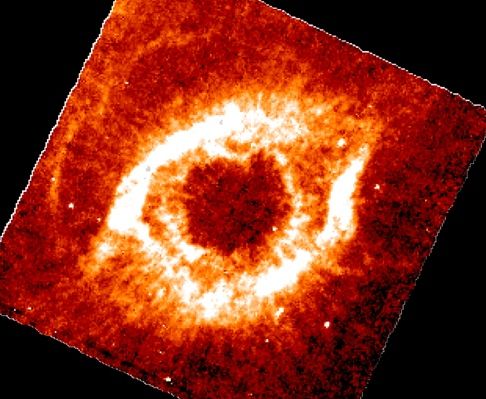 |
Астронет: Астрономическая картинка дня Улитка в инфракрасном свете http://variable-stars.ru/db/msg/1163729/eng |
Credit & Copyright: ESA/ISO,
ISOCAM Team and P. Cox et al.
Explanation:
Five hundred light years from Earth, in
the constellation Aquarius,
a sun-like star is dying.
Its last few thousand years have produced
the Helix, a
well studied and nearby
example of a Planetary Nebula - typical
of this
final phase of stellar evolution.
The emission in this
Infrared Space Observatory image of the Helix nebula
comes mostly from the expanding shells of molecular hydrogen gas.
Dust, normally expected in such nebulae, should also radiate strongly
at infrared wavelengths but
mysteriously seems to be absent here.
The culprit may
may well be the Helix's central star, a contracting
white dwarf.
This small but extremely hot star radiates most of its
energy at
short Ultraviolet wavelengths and
is invisible in this infrared mage.
Astronomers suspect that over time,
this intense Ultraviolet radiation may have destroyed
the dust.
The Sun is expected to go through
its own Planetary Nebula phase ...
in another 5 billion years.
Authors & editors:
Robert Nemiroff
(MTU) &
Jerry Bonnell
(USRA)
NASA Web Site Statements, Warnings,
and Disclaimers
NASA Official: Jay Norris.
Specific
rights apply.
A service of:
LHEA at
NASA /
GSFC
& Michigan Tech. U.
